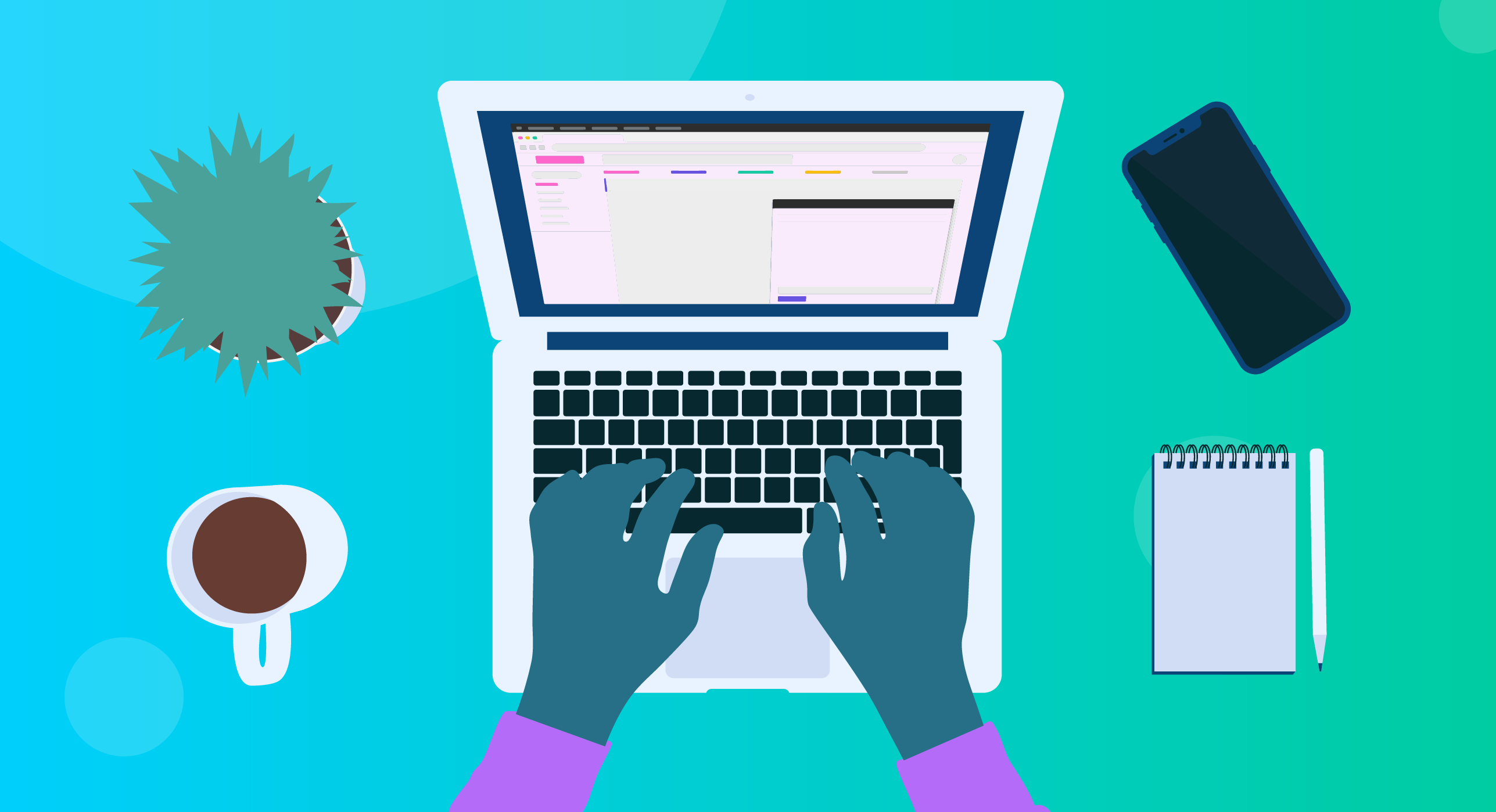COVID-19 has been a catalyst for one of the biggest financial crises in recent history, and many individuals and families are feeling the effects. This has a domino effect for practice owners in many areas, and it means that collecting missed payments is a bigger issue than ever before. In fact, a recent poll in the Power Diary Facebook Group showed that the issue of late payments is of top interest for many.
As a practice owner, if you don’t have an up-front policy that covers payment expectations and payment reminders, you’re likely spending a lot of time following up with clients, often taking you and your staff away from more important tasks. And, time implications aside, late payments also have serious negative consequences for the financial health of your practice.
But, your patients aren’t just numbers, and for many practice owners, the thought of taking a strict approach to people you care about isn’t something you want to do either.
How to Remind Someone to Pay You, Without Losing Them as a Client
Dealing with late payments is truly an art. You have to tread carefully and balance empathy with the need to pay your overheads and staff that make running your practice possible.
While you may find yourself making genuine connections with regular clients, late payments will take a toll on your finances if you’re not careful. As health professionals, it can be challenging to talk about money, but the reality is that if you don’t pay attention to your cash flow, you won’t be able to stay in business, and then you won’t be able to help anyone.
To get your approach right, think about what you’re offering. You provide a professional service built on years of studies and hard-won experience, and, in the end, your practice needs to make a profit to be viable.
But, you don’t want to lose your empathy and come across as too harsh. Money is a sensitive topic, especially in 2021, with so many families in difficult financial positions. Therefore, to maintain positive relationships, you need to find effective methods to remind someone to pay you so you can keep your business afloat while still showing your clients that they matter.
Here are 5 Effective Ways to Collect Payment Efficiently, without Losing the Personal Touch
1. Make Communication Simple & Convenient
If a client is late on payments, the first step is to contact them via email, always ensuring that your emails are sensitive, friendly, and kind.
To maintain good client relationships, combine invoicing emails with personal messages. This way, it’s not always you asking for the money. For ease of reference, you can attach the invoice to new emails, and Power Diary’s invoicing features can be used to manage outstanding accounts.
You can also vary your email sending times to improve response rates. For example: if you send one at 6 pm, send the next a couple of days later at 9 am. Early mornings are often more effective as you won’t be at the bottom of the email pile from the evening before.
When it comes to clients making payments, your goal is to make it as easy as possible. One of the ways to do this is to add a credit card payment option to your email template in order to simplify the payment process. With the option to settle immediately with just a few clicks, you can encourage faster remuneration.
If email isn’t giving you the response rate you need, you should consider contacting your client via SMS; however, this approach should be used with caution. Keep your messaging short and to the point, and address the client by name. Again, your client is likely very busy or possibly dealing with financial issues, so be careful with your wording.
2. Call Your Client Directly
If the email and messaging route are unsuccessful, pick up the phone. These calls can be awkward, but they don’t need to be if you have a general script that you follow. Your call should convey empathy, and you can hear your customer out, hopefully bringing you to an agreement. You’ll often discover that your client has been busy or simply forgot to pay.
You’ll need to find a middle ground between being warm and friendly while clearly communicating the need to settle any outstanding.
3. Offer a Payment Plan
If your client is struggling financially and can’t make payment in full, a payment plan can be an effective solution. You can negotiate a flexible arrangement during your conversation with your client, allowing them to pay back their bill over a reasonable time period.
Another option is to advertise the opportunity for payment plans from the get-go. This could attract a larger clientele, show your commitment to helping your clients, and bring you a steady flow of income from several sources. However, this should be discussed with your accountant or finance team to ensure that your business will be able to meet overheads and turn a profit.
You can remind your clients of all upcoming payments due by using clinic management software with a tasks feature. Your team should also know how to add and manage payments, which will aid you in allocating prepayments or partial payments within a payment plan.
4. Thank Clients When They Pay
Thanking clients when they pay you is an ideal way to show your appreciation and will hopefully encourage them to develop an awareness of the value of your service.
So, whether it’s cash in hand or an email exchange, be sure to say ‘thank you’ with a smile.
5. Establish Payment Expectations Upfront
You can’t blame a client for not making a payment if your expectations are unclear. Here are some tips to ensure that everyone is on the same page:
- Train your staff to mention payment expectations when a client emails or calls to make an appointment.
- Ensure that all patients sign a Patient Payment Policy
- When sending an appointment confirmation via email or SMS, you can include text or add a link to your payment policies.
- Make it clear that you charge a late payment fee.
- Have your payment expectations visible on the wall in your reception area.
- Finally, you can use the Power Diary Client Portal to collect upfront payment or a deposit.
Unfortunately, while these approaches to reminding someone to pay you can help you tactfully and efficiently resolve late payment issues, they don’t solve the root problem of providing a service, then chasing the payment.
So, maybe it’s time to shift things around a bit…
How to Avoid Late Payments From Your Clients in the First Place
No one wants to hand over their clients to debt collectors, but sometimes it’s unavoidable. Rather than getting to that point, you should focus on ways to avoid late payments in the first place.
These are some ways you can avoid late payments:
1. Request Advance Payments via Stripe
If you’re concerned about providing a service and not receiving compensation, it’s perfectly acceptable to insist on advance payment. Just clarify the details with your client, so they are aware of this expectation before appointment confirmation.
You have the option of enabling ‘require payment’ when a client books through the Power Diary client portal as part of your practice management system. This will make it mandatory for upfront payments to be made via Stripe. You’ll need to connect and integrate Power Diary with your Stripe account (and if you haven’t already done so, you’ll also need to sign up with Stripe.)
2. Stay Efficient and Professional
Timeliness is an integral part of how to remind someone to pay you. Notify your staff to process and send bills as soon as possible, so clients understand that payment is expected right away. On each invoice, include your practice phone number so that customers can contact you with any invoicing queries.
3. Use Power Diary Toggle Alerts
If you’ve been running your own practice for a while, you’re probably aware of who your regular late payers are. To be proactive, you can use your practice management software to set alerts for clients with a known history of late payment so that your staff know which patients will need follow-up reminders. You might want to develop a standard strategy that can be used for all late payments or request upfront payment from repeat offenders.
3 Templates to Remind Someone to Pay
Example 1: Sent a Week before the Invoice is Due
Subject: Payment Reminder: {SystemDocumentName1} is Due in 1 Week
Dear {ClientPreferredName},
We hope you are well, this is a friendly reminder that your invoice is due for payment one week from today.
The invoice is available here: {SystemDocumentName1}, and can be settled by credit card: {InvoicePayLink}, or by direct deposit to the bank account specified on the invoice.
We’d appreciate it if you could look over the invoice when you have a chance. Please get in touch with us if you have any questions.
Thank you,
The Team at {BusinessName}
Example 2: Sent on the Due Date
Subject: Payment Reminder: {SystemDocumentName1} is Due Today
Dear {ClientPreferredName},
We hope you’re doing well. This is a reminder that your invoice is due for payment today: {SystemDocumentName1}
You can settle the invoice by credit card: {InvoicePayLink} or, if you prefer to pay by direct deposit, you can make payment to the bank account specified on the invoice.
If you have any questions, please let us know.
Kind Regards
The Team at {BusinessName}
Example 3: Sent One Week after the Invoice Due Date
Subject: Payment Reminder: {SystemDocumentName1} is One Week Overdue
Dear {ClientPreferredName},
This is a reminder that payment for your invoice is one week overdue.
The invoice is available here: {SystemDocumentName1}, and can be settled by credit card: {InvoicePayLink}
If you would like to settle by direct deposit, our banking details are included on the invoice.
Please note that a 5% late payment fee is applicable if payment is not received within 2 business days as per our Patient Payment Policy.
If you need any help, we’re always available to assist.
Kind Regards,
The Team at {BusinessName}
Does This Look Good to You?
Take action right now and create an Email Template for emailing invoices and statements.
Then, select and save your template in Setup > Configuration > Invoices, in the Invoice Email Template field. This way, when you click on the ‘Email’ button on the Invoice or Appointment Panel, you’ll have access to your saved Template.
It’s simple to do (and you can include a link for immediate credit card payment too). Using email templates will save your admin staff and finance team a lot of time!
In Conclusion
Chasing late payments is never easy, especially in these difficult economic times. However, if you want your practice to thrive, you need to prioritise the financial health of your practice while balancing cash flow with the needs of your patients.
Running your own business is often stressful, and you’re constantly caught between different priorities, both administrative and customer-facing. Therefore, it’s essential to have written processes in your Practice Operations Manual that cover how to remind someone to pay you and to ensure that these procedures are communicated clearly to your staff and clients. This empowers your team to make decisions that support the needs of your practice and your clients. In the long run, your clients will respect you more for it (and you can rest easy knowing that your practice won’t go into the red).





